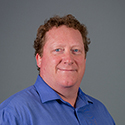Transform Your Time-Course into a One-Plate Experiment with Live-Cell Kinetic Assays
In this webinar, you will learn:
- How live-cell kinetic assays work
- The benefits of using live-cell kinetic assays for time-course analysis
- How a real-time extracellular ATP assay is used to monitor immunogenic cell death
Summary
Want to use fewer plates, tips and cells in time-course experiments? Want to spend less time pipetting and collecting samples? Join our webinar to learn about detection reagents that allow the same sample well to be repeatedly measured over multiple time points. This saves you time and effort, enabling you to collect more informative data in real time. These live-cell kinetic assays are run on a standard plate-reading luminometer and don’t require a special instrument. If you want to measure cell health parameters or reporter assay readouts, Promega offers multiple kits that can streamline your research.
Speakers

Terry Riss, PhD
Senior Product Manager, Cell Health
Promega Corporation
Dr. Terry Riss started the Cell Biology program at Promega Corporation in 1990 and held several R&D and Project Management positions since. Dr. Riss managed development of cell viability, cytotoxicity, apoptosis, and protease assay systems and also lead efforts to identify and promote multiplexing of cell-based assays to determine the mechanism of cell death. Dr. Riss now serves as Senior Product Manager, Cell Health involved in outreach educational training activities including validating assay systems applied to 3D cell culture models. Dr. Riss also serves as an editor of the In Vitro Cell-Based Assays section of the Assay Guidance Manual hosted by The National Center for Advancing Translational Sciences (NCATS) at the NIH.

Andrew Niles
Senior Research Scientist
Promega Corporation
Andrew Niles is a Senior Research Scientist in the Assay Designs Group at Promega Corporation (Madison, WI). His laboratory is focused on developing homogeneous “add-mix-measure” assay chemistries for cell-based studies. The lab utilizes fluorescent and/or bioluminescent detection platforms configured in plate-based, multiplexed formats to detect cytotoxicity and elucidate mechanism of action. These efforts have led to multiple commercialized assay systems in the area of in vitro toxicity testing. He has been awarded eleven U.S. Patents relating to cell and protease biology, authored several book chapters and reviews, and is an active member of Society of Toxicology, Society for Laboratory Automation, Laboratory Robotics Interest Group, and American Association for Cancer Research.